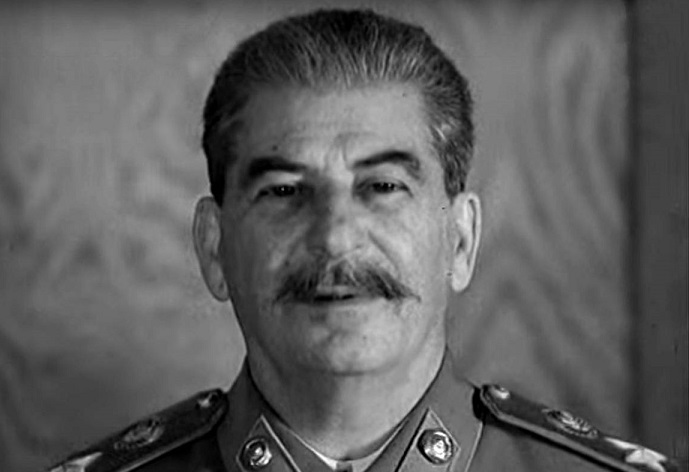
History 21/03/20 What part of China Stalin wanted to join the Union
the Western part of China, Xinjiang or Chinese, historically, is called East Turkestan. Mostly populated by Uighurs, Kazakhs and many Turkic peoples and Mongols, it was annexed by China only in the middle of the XVIII century. After a bloody war with the Dzungar khanate, during which the Chinese troops deliberately killed all of the male batyrs, this vast country for a long time, the old memory, was called Dzungaria. Called her also and Kashgaria named in her oldest city, founded BC Tocharians.
In 1912 in China was overthrown by the Imperial Qing dynasty. Was proclaimed the Republic of China. The Central government weakened, and in many provinces only in words it recognized. Region with a large non – Chinese population of Tibet, Manchuria and East Turkestan – found thrust for separatism.
In East Turkestan after the Russian Civil war, found shelter at first quite a significant group of Russian whites, the Alash-Orda Kazakhs, and then to the Basmachi. In the late 20-ies of the Central authority passed into the hands of General Chiang Kai-shek, which began to strengthen the unity of China and led a hard struggle against separatism. Appointed him Governor of Xinjiang, Jin Shuzeng abolished the tribal autonomy of the Uighurs and has held a number of other unpopular measures. At the same time, because of its territorial position, he established, bypassing Chiang Kai-shek, direct contacts with the authorities of Soviet Central Asia.
Chiang Kai-shek at that time was hostile to Communists, and therefore with the Soviet Union. After learning about the act of the Governor, who deprived him of his duties and sent troops into Xinjiang. But they had to fight, not against Jin Shugenja and against erupted in the province since 1931 anti-Chinese uprising. The uprising was supported by the Russianand the whites. In April 1933, Jin fled to the Soviet Union. November 12, 1933, the rebels seized the Kashgar and proclaimed Turkic Islamic Republic of East Turkestan.
Its existence was short-lived. Stalin, in connection with the growing Japanese threat in the far East, decided in the moment to improve relations with Chiang Kai-shek. He entered into an agreement, which succeeded the Jin Governor of Shen Sizem and sent him to the aid of Soviet troops. In February 1934 the Uighur rebels were defeated. Shen Long, formally submitting to Chan became the de facto ruler of Xinjiang, under the strong Soviet influence. He also entered into a number of separate economic agreements with the Soviet Union, its government and army was a Soviet advisors. In favor of the Soviet Union, he spent the repression of the white Russians, also giving part of them to the Soviet authorities. Not formally challenge the unity of China, the Soviet Union actually turned Xinjiang into its area of influence. Chiang Kai-shek was forced to accept, as received through the province of military assistance from the Soviet Union against Japan.
However, after the beginning of the great Patriotic war, Shen Long, expecting a quick defeat of the Soviet Union, decided to break free from his care. In 1942 he was arrested by Soviet advisers, simultaneously started repressions against local Communists and national movements. In response, in the same year there arose the Kazakhs in Northern Xinjiang province. At the same time Shen did not realize that Chan was an ally of both the US and the USSR. In August 1944, when the international situation has changed dramatically, Chiang Kai-shek took Shen Chica as Governor, and he had to obey.
However, the national liberation movement in the province has gained momentum. The Soviet leadership, in contrast to previous years, decided to make a bet on it. The movement was once again white emigration, the Patriotic feelings which the Soviet Union played during the great Patriotic war. On 12 November 1944 at Ghulja was proclaimed East Turkestan Republic. She suppliedeh weapons and ammunition from the Soviet Union and caused the Kuomintang army a series of defeats. Chiang Kai-shek, the Japanese occupied the front, had nothing to do with it. Seeking agreement with the Soviet Union, he, after the surrender of Japan, made a confession over the liberated areas of East Turkestan the right to autonomy.
negotiations Began. In the summer of 1946 came into effect the agreement by which in Xinjiang formed a coalition government based on a representation of the ethnicities with a predominance of non-Chinese. Proclaimed the equality of Chinese and Turkic languages. In the liberated areas remained autonomy and its own army. Like the first time, the Eastern Turkestan Republic (VTR) occupied only part of a huge province.
[irp]
However, at this time broke out a new civil war between the Kuomintang and the Communists, and both sides in East Turkestan have paid little attention to the agreement. And when Beijing came under the control of the Communists, the delegation of VTR busted August 24, 1949, in Beijing for talks with Mao Zedong on the terms of reunification with China. She traveled through the Soviet territory. It was headed by the President of VTR Akhmetzhan Kasumi, a supporter of the independence of East Turkestan from China. Special flight Aeroflot, which was the delegation, crashed in the mountains of Transbaikalia. All passengers and crew members were killed. Following the delegation of VTR led by Sayfutdinov Azizov agreed to the entry of VTR in the people’s Republic of China as part of Xinjiang province, with a guarantee of compliance with the ethnic and cultural rights of nationalities. Following this, Kuomintang Governor of the province Burgan of Shahidi declared their subordination to the Communists, was left behind by those in office.
There is a version that the crash of the Il-12, which flew the first delegation of VTR, was rigged. While the outcome of the civil war in China was unclear, Stalin supported the VTR against the Kuomintang. But when the Communists began to clearly to gain the upper hand, Stalin began to encourage the heads of the VTR to accept subordination to the new authorities of China. Because of the mood of the local population and its leaders, as well as the previous Soviet policy aimed at the separation of this province from China, it was not easy to achieve.
Yaroslav Butakov
Source:
© Russian Seven
Featured articles Share: Comments Comments on the article “What part of China Stalin wanted to join the USSR” Please log in to leave a comment! br>
Share on Tumblr
















